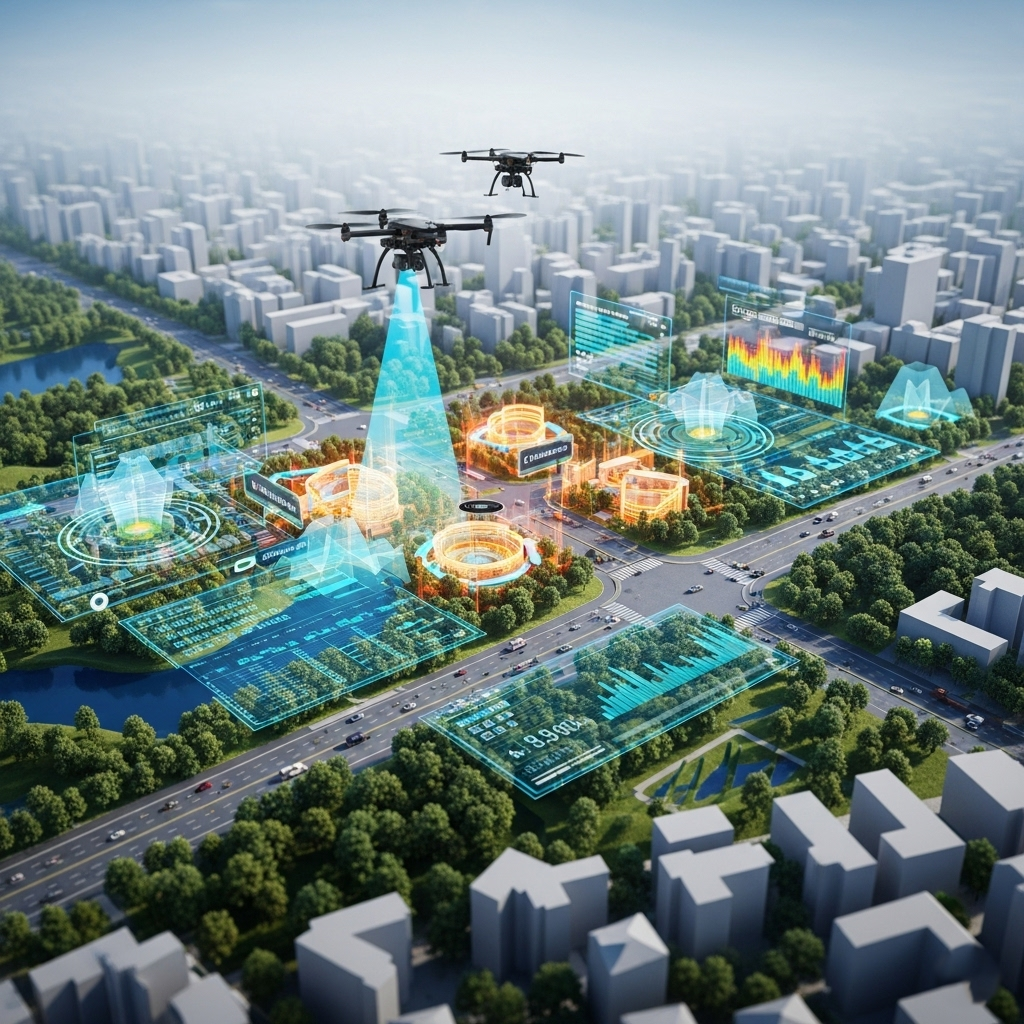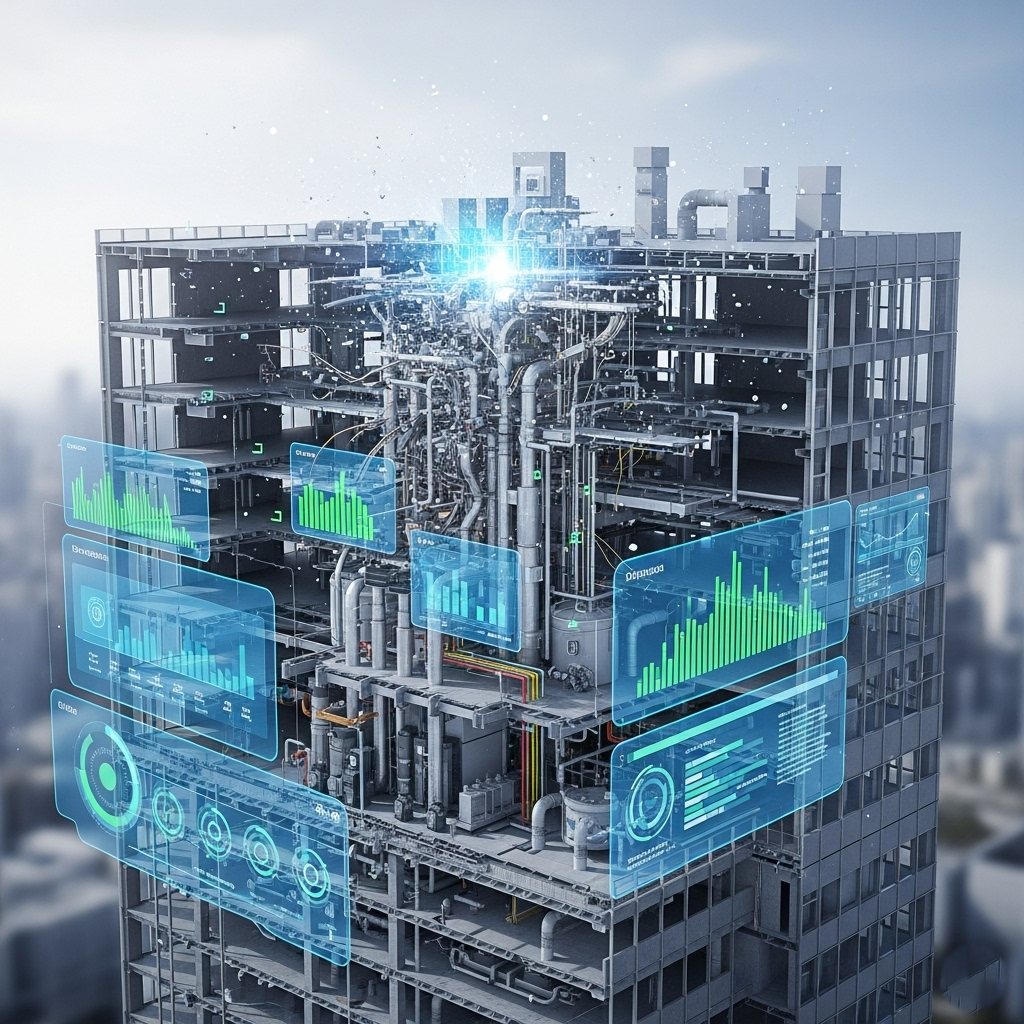The goal is to create visuals that are not only aesthetically pleasing, but also accurate representations of the design, helping stakeholders truly understand and connect with the project.

Core Tools for Visual Brilliance:
- Revit (for architects, structural, MEP, and beyond):
- The 3D Canvas: Every element modeled in Revit (walls, windows, furniture, pipes, ducts, structural beams) forms the basis of your visual. The more detailed and accurate the Revit model, the better your renders will be.
- Materials & Textures: Revit allows you to apply realistic materials (wood, concrete, glass, metal) and textures to surfaces. This is your first step to lifelike visuals.
- Lighting: Architects and MEP engineers can place and define lights within the Revit model, simulating natural and artificial illumination.
- AI Integration (via plugins like Veras, LooX, Arko):
- Concept Generation: AI can rapidly generate multiple design options and render styles directly from your Revit model, accelerating the ideation phase.
- Style Transfer: Apply different artistic styles (e.g., watercolor, sketch, photorealistic) to your renders with AI, giving clients diverse options.
- Intelligent Material & Asset Placement: AI can suggest and place contextually relevant materials and entourage (people, trees, cars) to quickly populate your scene and enhance realism.
- Automated Scene Setup: AI can help with camera placement, lighting presets, and rendering settings to get a good base image quickly.
- Collaboration: Architects share their detailed models, structural engineers add their elements, and MEP engineers populate with systems. All this rich BIM data flows into the visualization process.
- Civil 3D (for civil engineers, landscape architects):
- Site Context: Civil 3D provides the realistic terrain, roads, utilities, and landscape elements. This is crucial for exterior renderings that truly ground the building in its environment.
- Realistic Grading & Surfaces: Accurate contours, earthwork, and surface materials (grass, pavement, water) are vital for authentic exterior shots.
- AI Integration (via Forma, other plugins):
- Generative Design for Site Layouts: AI in tools like Autodesk Forma can rapidly generate optimal site layouts, considering factors like solar access, wind patterns, and pedestrian flow, and these optimized layouts can be visualized.
- Environmental Analysis Visualization: Forma’s AI-powered analyses (wind, noise, solar) can be visually represented to showcase performance insights.
- Navisworks (for coordination and combined models):
- Model Aggregation: Navisworks is where all the individual trade models (Revit, Civil 3D, Inventor, etc.) are brought together into one federated model. This unified model is essential for rendering the complete digital twin.
- Clash Detection Visualization: While not directly for photorealism, visualizing clashes in Navisworks (e.g., a pipe going through a structural beam) helps ensure the constructability of the model, which is a prerequisite for accurate final visuals.
- 3ds Max (for advanced visualization specialists, marketers):
- Unparalleled Realism: 3ds Max is a powerhouse for creating high-end, photorealistic renderings and animations. It offers advanced modeling, texturing, lighting, and rendering capabilities far beyond basic BIM software.
- Complex Material Creation: Create highly detailed and physically accurate materials with intricate reflections, refractions, and displacement.
- Advanced Lighting Scenarios: Simulate complex lighting conditions, including volumetric lighting, caustics, and global illumination, for truly immersive scenes.
- Rich Asset Libraries: Access vast libraries of high-quality 3D models (furniture, people, vegetation) to populate scenes with realistic entourage.
- AI Integration (often via plugins like V-Ray, Corona Renderer):
- AI Denoisers: These significantly reduce render times by intelligently removing noise from images, allowing for faster iterations and higher quality results without waiting for hours.
- AI-Powered Material Creation: Some renderers (like V-Ray 2026, as noted in search results) are developing AI that can generate physically accurate materials from reference images or text descriptions.
- Scene Intelligence: AI can optimize rendering settings, light bounces, and sampling rates automatically, leading to more efficient rendering.
- Twinmotion (for real-time visualization, interactive walkthroughs, marketers):
- Speed and Interactivity: Twinmotion offers real-time rendering, allowing for immediate visual feedback as you make changes. This is fantastic for client presentations and quick iterations.
- Intuitive Workflow: Drag-and-drop assets, set up weather, season, and time-of-day effects with simple sliders.
- Extensive Asset Library: Includes a vast library of PBR materials, animated humans, smart assets (doors that open), and environmental elements from Quixel Megascans and Sketchfab.
- One-Click Sync: Direct Link plugins allow seamless synchronization with Revit, Civil 3D, and 3ds Max, meaning changes in your design software are instantly reflected in Twinmotion.
- VR/AR Experiences: Create immersive VR experiences and explorable presentations for clients, allowing them to “walk through” the digital twin.
- AI Integration:
- While Twinmotion’s core AI isn’t focused on generative rendering, its smart assets and environmental controls leverage algorithms to provide realistic real-time behavior (e.g., how trees sway, how people walk).
- Future developments are likely to see more AI-driven scene generation and asset placement within real-time engines.
- Autodesk Forma (for early-stage design, urban planners, architects):
- Conceptual Visualization: Forma allows for rapid creation and visualization of early-stage massing models.
- Contextual Data Visualization: Beyond basic rendering, Forma integrates real-time environmental analyses (wind, sun, noise, embodied carbon) directly into the visual model, allowing for data-driven design decisions that are visually represented.
- AI-Powered Optimization: AI within Forma helps optimize building placement and massing for performance, and these optimized designs can be immediately visualized in their contextual setting.

The Collaborative Visualization Workflow:
Here’s how trades work together to create those stunning images:
- Design Phase (Revit, Civil 3D, Forma):
- Architects: Model the core building, apply initial materials, set up basic lighting. Use AI plugins in Revit to explore different facade options or interior finishes rapidly.
- Structural Engineers: Integrate structural elements, ensuring they are accurately represented and do not clash with architectural elements.
- MEP Engineers: Model ductwork, piping, electrical systems. These elements, while sometimes hidden, are crucial for detailed walkthroughs or for visualizing system integration in a digital twin.
- Civil Engineers/Landscape Architects: Develop the site, roads, and landscape in Civil 3D. Ensure seamless integration of the building model onto the terrain. Use AI in Forma for site optimization and to visualize environmental impacts.
- Coordination & Aggregation (Navisworks):
- BIM/VDC Managers: Federate all the individual trade models into Navisworks. Run clash detection to resolve any conflicts before high-fidelity rendering begins. A clean, coordinated model is essential for accurate, beautiful renders.
- Visualization Production (3ds Max, Twinmotion, V-Ray/Corona):
- Visualization Specialists/Architects/Marketers:
- Import/Link: Bring the federated Navisworks model (or individual Revit/Civil 3D models directly) into 3ds Max or Twinmotion.
- Material Refinement: Apply highly detailed and realistic materials. This is where AI-powered material generation can accelerate the process.
- Advanced Lighting: Set up complex lighting scenarios, including HDRI environments for realistic outdoor lighting, and detailed artificial lighting for interiors.
- Entourage & Context: Add realistic people, vehicles, furniture, and landscaping from extensive asset libraries. AI can assist with intelligent placement to make scenes feel lived-in.
- Camera & Animation: Set up camera angles, walkthrough paths, and fly-through animations.
- Rendering:
- Offline Renderers (e.g., V-Ray, Corona for 3ds Max): Produce high-quality, photorealistic stills and cinematic animations. Leverage AI denoisers to speed up render times without compromising quality.
- Real-time Renderers (Twinmotion): Create interactive walkthroughs, 360 panoramas, and quick videos. Use Twinmotion’s built-in AI for weather effects, vegetation growth, and pedestrian movement to add dynamic realism.
- Post-Production (e.g., Photoshop, After Effects): Enhance rendered images and animations with color correction, atmospheric effects, and motion graphics. AI-powered image enhancement tools can further refine details.
- Visualization Specialists/Architects/Marketers:
- Sharing & Interaction (Autodesk Construction Cloud, Autodesk Tandem):
- Project Team/Stakeholders: Publish high-quality images and interactive 3D presentations (from Twinmotion) to Autodesk Construction Cloud.
- Digital Twin Delivery (Autodesk Tandem): For the living digital twin, Autodesk Tandem is key. While not a rendering engine itself, Tandem is where the rich data and 3D models live post-handover. It can link to external visualization platforms or eventually incorporate real-time visualization capabilities, allowing facility managers to explore a “visually stunning” digital twin that’s also connected to live performance data from IoT sensors. Imagine clicking on a virtual AC unit in Tandem and seeing its real-time energy consumption and maintenance history, all within a beautiful 3D representation.
The AI Edge for Stunning Visuals:
AI isn’t just a buzzword; it’s actively making the creation of photorealistic visuals faster, more efficient, and more accessible:
- Generative Design & Ideation: AI can rapidly generate visual design options, saving countless hours.
- Intelligent Asset Placement: AI helps populate scenes with realistic entourage, reducing manual effort.
- Smart Material Creation: AI-driven tools can create and suggest realistic materials based on reference images.
- Faster Rendering: AI denoisers and intelligent rendering algorithms drastically cut down render times.
- Automated Scene Setup: AI assists with camera angles, lighting, and environmental settings.
- Predictive Visualization: AI in tools like Forma can visually represent complex analyses (wind, sun, energy performance) directly on the model, making “stunning” not just about looks, but about insightful performance.
By embracing these Autodesk tools and leveraging the growing power of AI, all parties in an AECO project can go beyond basic models to create truly stunning, lifelike visual representations of their digital twin, captivating stakeholders and unlocking deeper understanding throughout the project lifecycle.


Leave A Comment